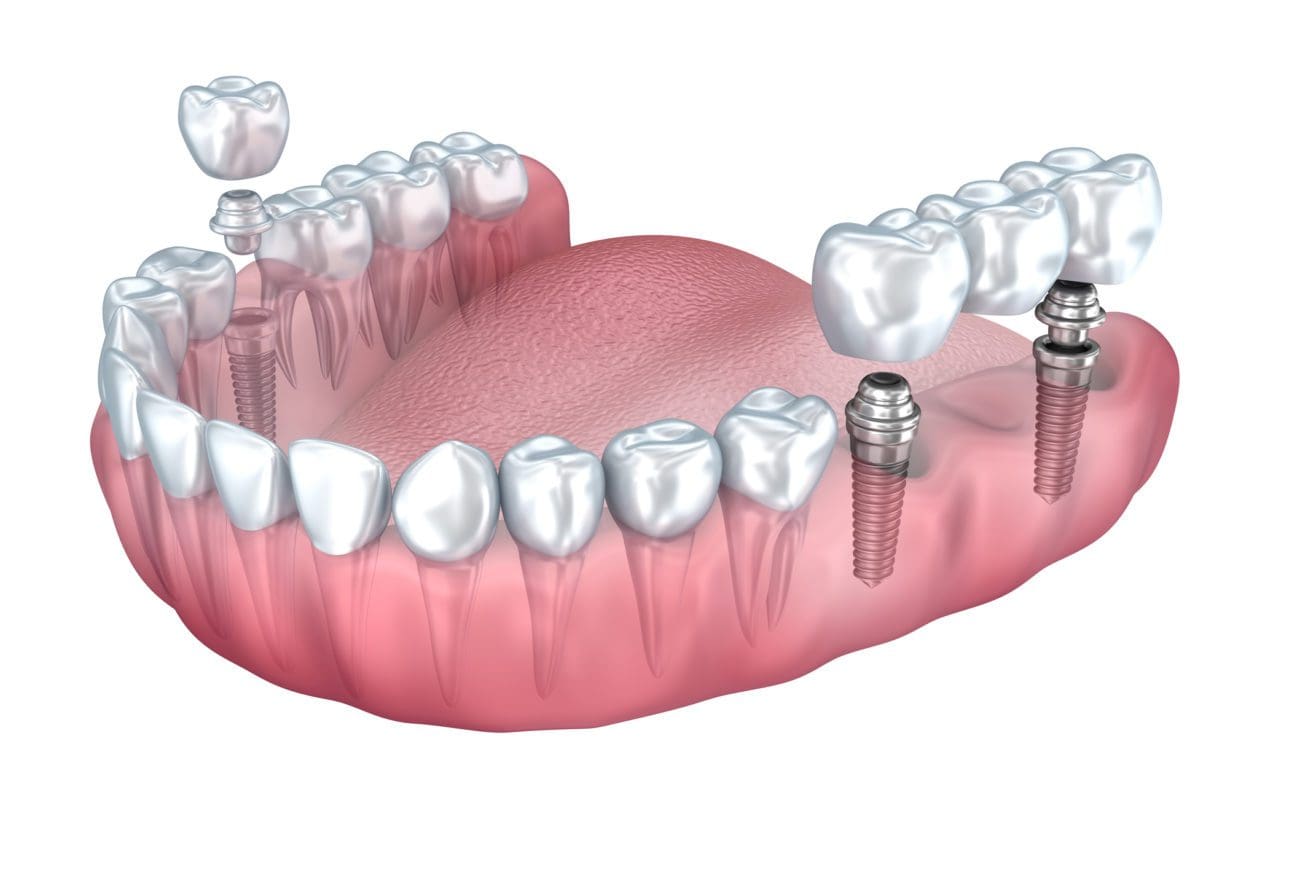Dental Sense - The Facts
Dental Sense - The Facts
Blog Article
The Main Principles Of Dental Sense
Table of ContentsSome Of Dental SenseDental Sense Can Be Fun For AnyoneThe Definitive Guide for Dental SenseExamine This Report about Dental Sense
are medical devices operatively implanted into the jaw to bring back an individual's ability to chew or their appearance. They offer assistance for artificial (phony) teeth, such as crowns, bridges, or dentures. When a tooth is lost due to injury or illness, a person can experience difficulties such as quick bone loss, defective speech, or adjustments to eating patterns that lead to discomfort.Oral dental implant systems include a dental implant body and oral implant abutment and might also include a joint addiction screw. Dental veneers cost. The oral implant body is operatively inserted in the jawbone in location of the tooth's root. The oral implant abutment is normally connected to the dental implant body by the abutment fixation screw and extends via periodontals right into the mouth to support the affixed synthetic teeth
(https://forums.hostsearch.com/member.php?274218-dentalsense1)Framework of The Dental Implant System selecting dental implants, talk with your oral provider about the potential benefits and threats, and whether you are a prospect for the treatment. Points to take into consideration: Your general health and wellness is an important element in establishing whether you are a great candidate for oral implants, how long it will take to heal, and how long the implant might remain in location.
Smoking might influence the recovery process and decrease the long-term success of the implant. The healing process for the dental implant body might take several months or longer, during which time you normally have a short-lived joint in location of the tooth. the oral implant procedure: Thoroughly adhere to the dental hygiene guidelines provided to you by your dental supplier.
Dental Sense Things To Know Before You Buy
Implant failing can result in the requirement for an additional procedure to take care of or change the implant system. Recovers the ability to eat Restores aesthetic appearance Helps maintain the jawbone from diminishing due to bone loss Preserves the health of the bordering bone and periodontals Aids keep nearby (close-by) teeth stable Enhances lifestyle Damages to bordering natural teeth during implant positioning Injury to the surrounding tissues during surgical treatment, such as sinus opening Injury throughout surgery (for instance, fracture of surrounding jawbone) Inadequate function, such as seeming like the teeth do not attack with each other typically A feeling that the tooth hangs or turning in position resulting from an abutment screw loosening up Implant body failure (looseness of the implant body) due to systemic infection, which may be most likely in patients with unchecked diabetes mellitus because of neighborhood infection in bone and periodontals supporting the dental implant body due to postponed recovery, which may be more probable in patients that smoke Trouble cleaning up the periodontals around the dental implant, leading to bad dental hygiene Without treatment gum illness Post-surgical feeling numb due to nerve impingement or damages Always inform healthcare providers and imaging technicians that you have oral implants prior to any kind of magnetic vibration imaging (MRI) or x-ray treatments.
FDA is not mindful of any negative occasions reported for MRI or x-ray procedures with oral implants. Dental implants systems are generally made of products that adhere to international agreement requirements of the International Company for Standardization (ISO) or ASTM International. These requirements have details of what makes a secure material.

An oral implant is a structure that replaces a missing tooth. With screw-like tools, the surgeon inserts a dental implant right into the jawbone, and it acts as an anchor for a fabricated tooth, called a crown.
Dental Sense - The Facts
Some individuals are not qualified for dental implant surgical treatment. It is for dental doctors to operate people with: intense illnessuncontrollable metabolic diseasebone or soft tissue condition or infectionIf these problems are resolved, an individual can have the surgery. In, dental specialists avoid operating individuals with: If people with any one of the above undertake dental implant surgery, there is a greater risk of the implant falling short.

Dental implant surgical treatment is a tailored process. It's not the same for everyone. Yet the Visit Your URL adhering to provides a general introduction of what you can anticipate your dental practitioner, dental specialist, periodontist or prosthodontist to do: Position the dental implant operatively. Provide you time to recover. Attach the message and last crown, bridge or denture.
Next off, your specialist will meticulously position the dental implant into your jaw. Lastly, your specialist will certainly rearrange your gum tissues and shut the cut with stitches. If your dental implant is near the front of your mouth, your dental practitioner will make a momentary tooth for you to use till you recover. That method, you will not have a gap in your smile while you recover.
Excitement About Dental Sense
During the healing phase, your jawbone needs to fuse to the dental implant. This process can take anywhere from 3 to 9 months.
Once your implant heals, your dentist can connect the joint (small adapter blog post) and your final reconstruction (crown, bridge or denture). This generally takes about one hour to finish and might call for a 2nd small surgery. You shouldn't feel any type of pain during your oral implant procedure because your service provider will make use of medication to numb your periodontals.
Report this page